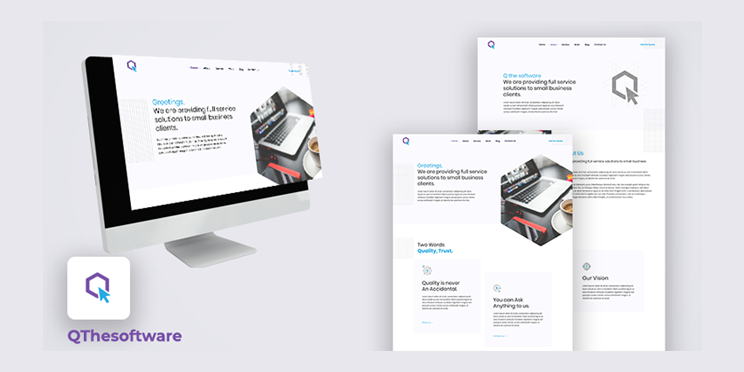Mobile has become the basic necessity of our day to day life, which has not only stagnant to calling or messaging features. But after connecting internet service with mobile phones, it has increased the use of social media platforms and other mobile applications.
However, developing a mobile application requires a proper understanding and systematic process. There has been a proper mobile app architecture followed by the companies providing mobile app development services.
Well, now the question arises here what is Mobile App Architecture?
As we all know, to do something big we require a specialized team and a proper process. Similarly, mobile app architecture can be defined as a properly structured step by step process, followed by the mobile application development team to develop an application.
Following a proper architecture helps in meeting up the deadlines at the targeted dates, which also accelerates the development process making future maintenance easier.
While maintaining the proper architecture also helps in avoiding problems caused when any new features are integrated in the future. So, to deliver an error free application which is compatible with all types of OS platforms is a crucial part that requires proper planning and understanding.
However, to develop the mobile app architecture consist of multiple layers as follows:
The standard architecture and most commonly used all over the world is “three layers architecture” which include:
- Presentation Layer.
- Business Layer.
- Data Access Layer.

Presentation Layer:
This is the initial stage of app development, where the main focus is on the “user interface” of the application, where the “user interface” means how the app will be presented to the end-users and how it would look like.
Client’s requirements play an important role in the development of this layer, the design made by designers should also fulfill the client’s requirements and expectations towards their application.
The main attention is to decide themes, color, fonts, images and icons to be used in the development of the app.
Business Layer:
Business Layer can be described as the logical layer, where the main goal is to focus on the functionalities of the app. Coordination among the team and workflow plays an important role to develop any app. So, the features and functionalities should be mentioned properly step by step, which also includes workflow, entities, and business components.
Data Access Layer:
This layer plays an important role in the secure data transaction, it combines the data utilities, service agents, and data access components.
The other primary goal, to design this layer is to get the data into the correct data format via different entities and save it in a proper format.
Important Factors to Consider Whilst Developing Mobile App Architecture)
● Deciding Device Type:

There are multiple categories of smartphones, tablets, watches and other gadgets in the market, which are classified based on their operating systems like iOS, android, blackberry, and windows. As we all are aware of, this all are completely different platforms which make the selection process of mobile app architecture more crucial and important. Nonetheless, while selecting the architecture for mobile app screen size, resolution, memory, storage capacity and availability of development tools should also be kept in mind.
● Stating User Interface:

As discussed above in the presentation layer section, the user interface describes the look of the application, one should make sure the UI (user interface) is not much complex. As if a complicated or confusing UI is developed, then the end-user would get confused, which would end up quitting the use of the application. So, User Interface should be designed simple, keeping in mind end-user requirements.
- Considering Bandwidth scenarios:

Bandwidth has a key role, so the scenarios of bandwidth can’t be neglected, such as in the area where the targeted audience lives, if there are high fluctuations in the internet speed, it would create a negative impact on the user experience. Therefore, different situations should be considered and kept in mind while designing mobile app architecture. Normally you should consider the worst possible internet network while developing the mobile app architecture.
- Application Navigation Selection:

Navigation of the application has a huge impact on the end-user and is also directly connected with the user interface experience. Application’s navigation should be designed in such a way that when users are searching for any particular page, they can directly reach out to it without consuming much time. There are being different navigation methods followed by the developers are mentioned below:
-
- Scroll views.
- Search driven.
- Single view.
- Stacked navigation bar.
- Gesture-based navigation.
- Modular controller.
- Tab controller.
One can choose the navigation method based on their end-users and application requirements.
Well, so far, the question remains: how to choose architecture for your mobile application?
The budget for the development of application plays a significant role here, there are different mobile app architecture platforms available, using which application can be developed:
- Native App Development:
In the case, if budget is not the concern and target audience consist of both Android and iOS operating systems, then one should always prefer to go with native app development, as it offers high performance and functionalities.
- Cross Platforms Development
While in case if the target audience uses the operating system like blackberry or windows, then going with the cross-platform app development is the best option, as it’s cost-effective but the user might compromise for the usability.
- Web Application
However, if someone is looking for more customer engagement, then one could go with the combination of native app and website app. As native app gives optimal experience to the users, while web applications can help to reach out to a large number of audiences as it can be accessed by all types of devices.
- Custom App Development
This can be considered as the perfect solution if someone is looking to target the specific audience for example iOS users or Android users only. This would be cost effective too as the client would require to pay for only one particular platform for which he is willing to target.
Conclusion:
Hope you understand and are able to decide the proper architecture for your mobile application and also choose the right platform to reach out to the targeted audience. If you are looking for a trusted and expert mobile app development agency then we are just a click away, please feel free to ask us!
Frequently Asked Question Related with Mobile App Architecture:
Q1. What is the name of the architecture used for hybrid apps?
A. A common solution is to use a framework like PhoneGap, which provides a common JavaScript API for hardware device access that works across nearly all platforms, as long as the mobile web app is wrapped in the native PhoneGap wrapper app, effectively creating a hybrid app.
Q2. What are the main steps in developing a mobile application?
A. Strategy, Analysis and Planning, UI/UX Design, app development, testing, Deployment & Support.
Q3. What are the different types of mobile applications?
A. There are 3 different types of apps: Native Apps, Hybrid Apps & Web Apps.




